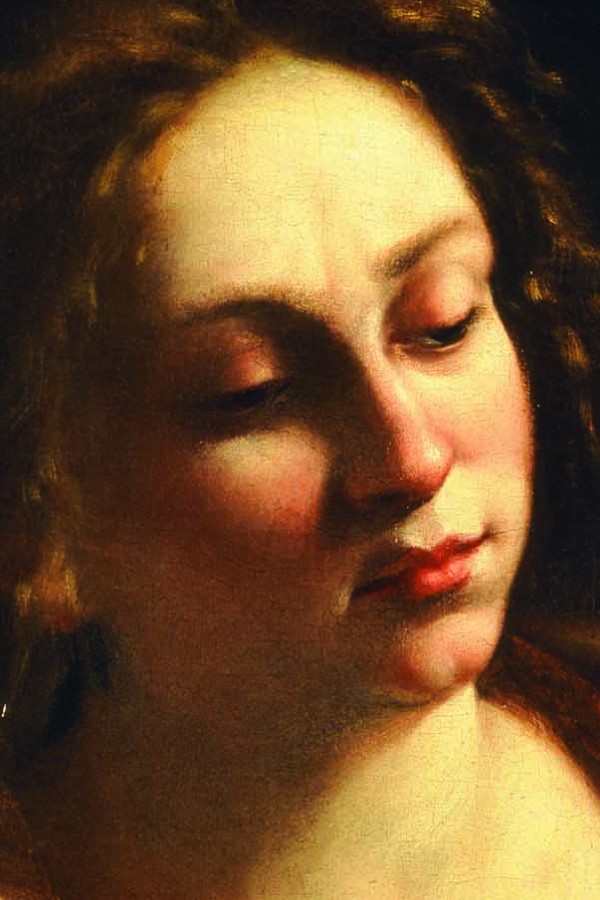What emotions is this person feeling?

Penitent Magdalene,
1615–1616
-
Bright emotions
-
Not at all Extremely
-
-
Quiet emotions
-
Not at all Extremely
-
-
Heavy emotions
-
Not at all Extremely
-
-
Sombre emotions
-
Not at all Extremely
-
Compare yourself to others
Choose different variables below, and see the patterns of response reflected in the circle of emotion above. Your responses are the coloured wedges. Others' responses are averaged in the spider graph of lines and dots.

Date: 1615–1616
Creator of the image: Artemisia Gentileschi Date of the image creation: 1615–1616 Medium of the image: Oil on canvas Person depicted: Mary Magdalene Typical of Renaissance penitence imagery, Mary Magdalene is depicted with a skull. It is held in her left hand, angled up at her, her right hand on her chest, her face tilted down to look into the skull's empty sockets. Artemisia Gentileschi (1593–1656) lights Magdalene’s face with a strong and warm light, giving it a composed, pensive strength as Magdalene meditates on life and death. Gentileschi, born in Rome, became one of the most significant Baroque painters in Italian history. At age 18, she was raped by her art tutor. In the ensuing seven-month trial, Gentileschi was tortured to verify her testimony. The rapist was found guilty, but never served his one-year sentence. This incident greatly impacted the young painter. Most of her work features female protagonists who conspicuously lacked the timidness, sensitivity and general weakness that characterized most portrayals of woman at the time. Rather, her heroines were courageous and powerful personalities. All of this confirmed Gentileschi’s positive reception by late-twentieth-century feminism. After leaving Rome, Gentileschi moved to Florence where she became the first woman to be accepted into the prestigious Academy of the Arts of Drawing. It was during this period that she painted this version of the Penitent Magdalene. Drawn from the post-biblical life of Mary Magdalene, a follower Jesus, arguably his only female disciple, this was a fairly popular subject. Numerous important artists did renditions of the theme, including Donatello, Caravaggio and Titan. At the time, Gentileschi had just given birth to a second son, and was experiencing financial difficulties owing to her two young children and her husband's gambling problem. The painting is held in the Marc A. Seidner Collection, Los Angeles.